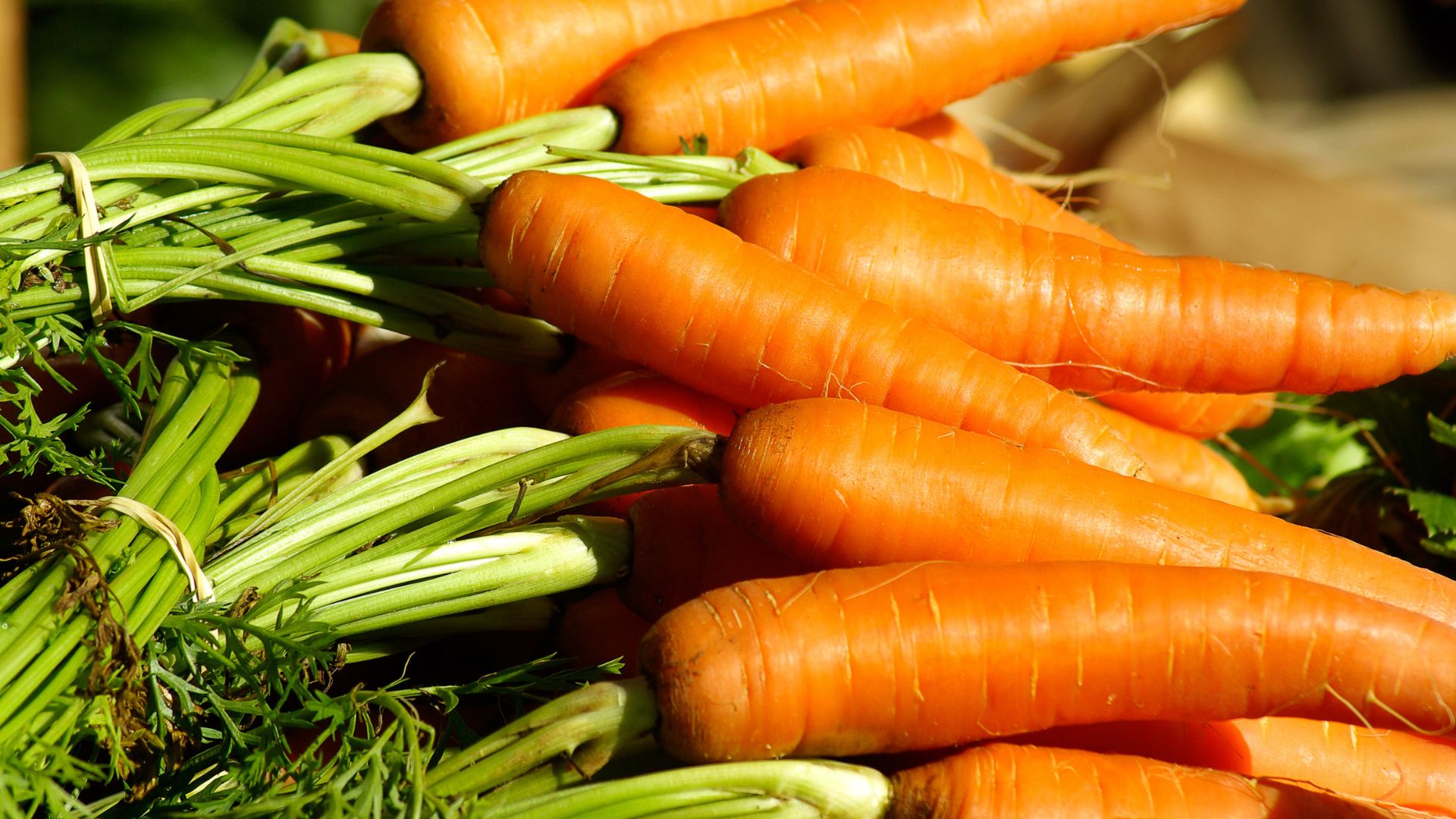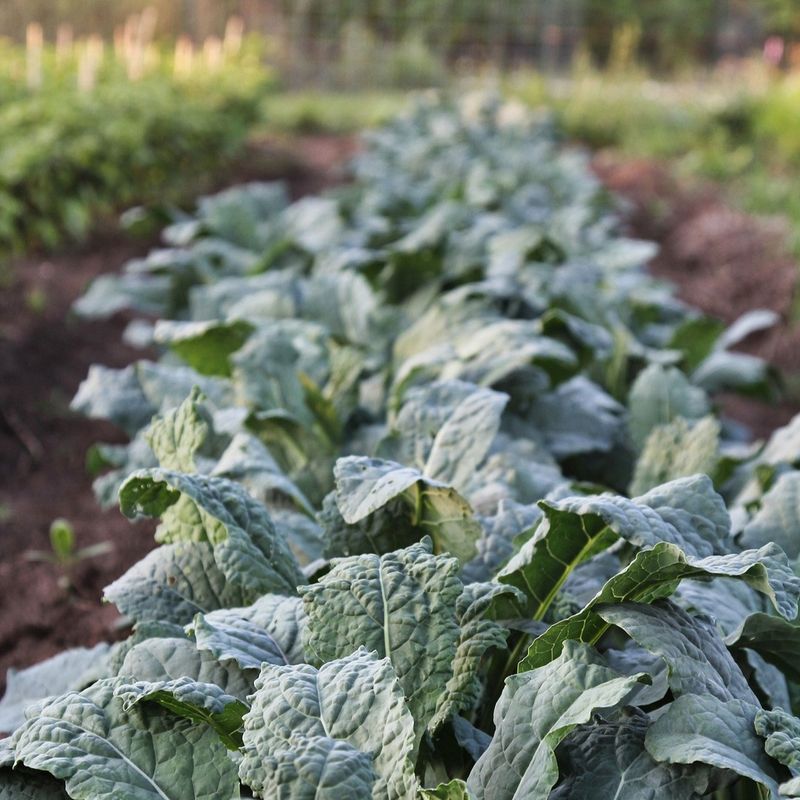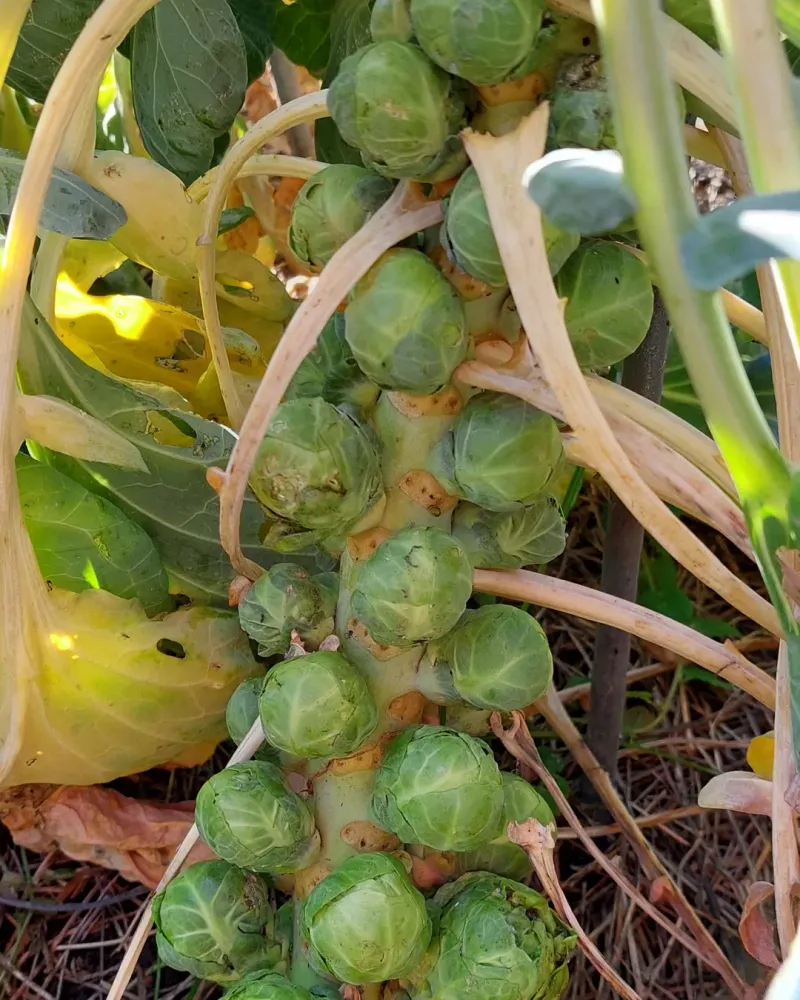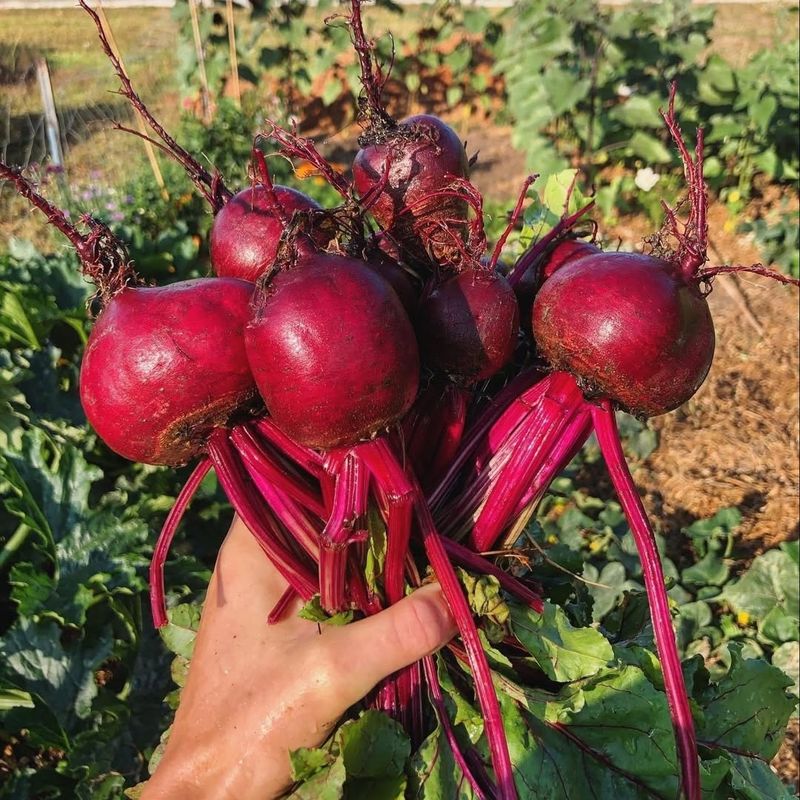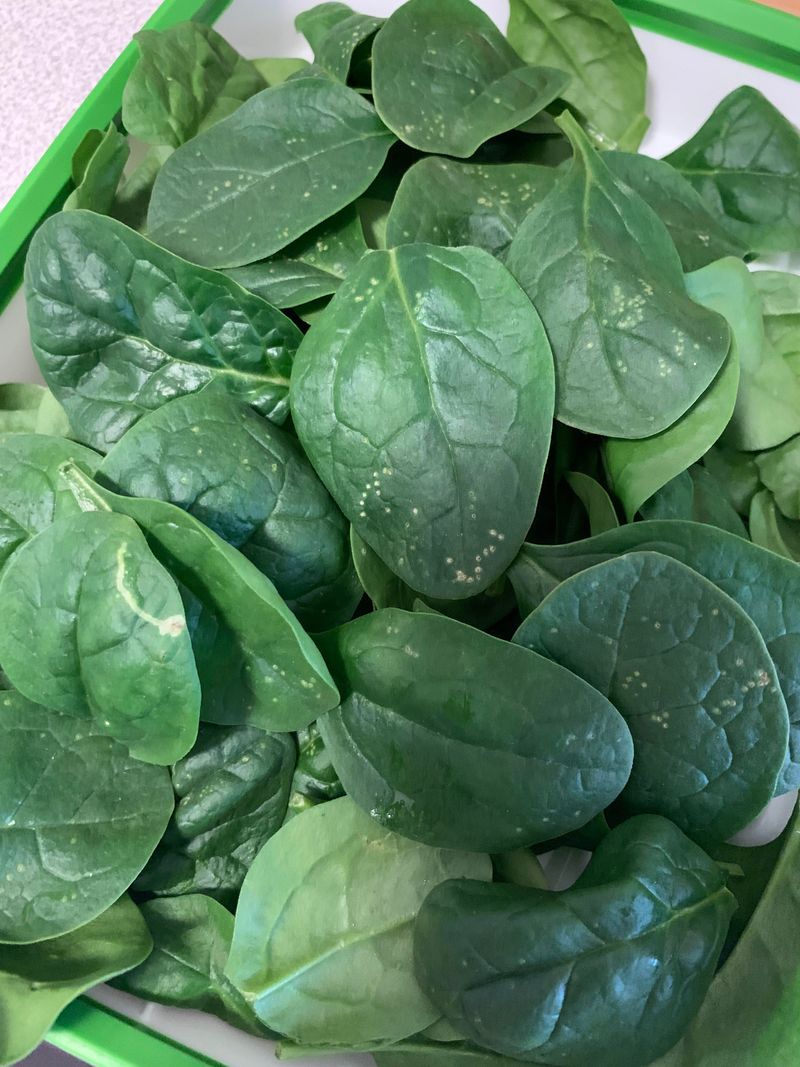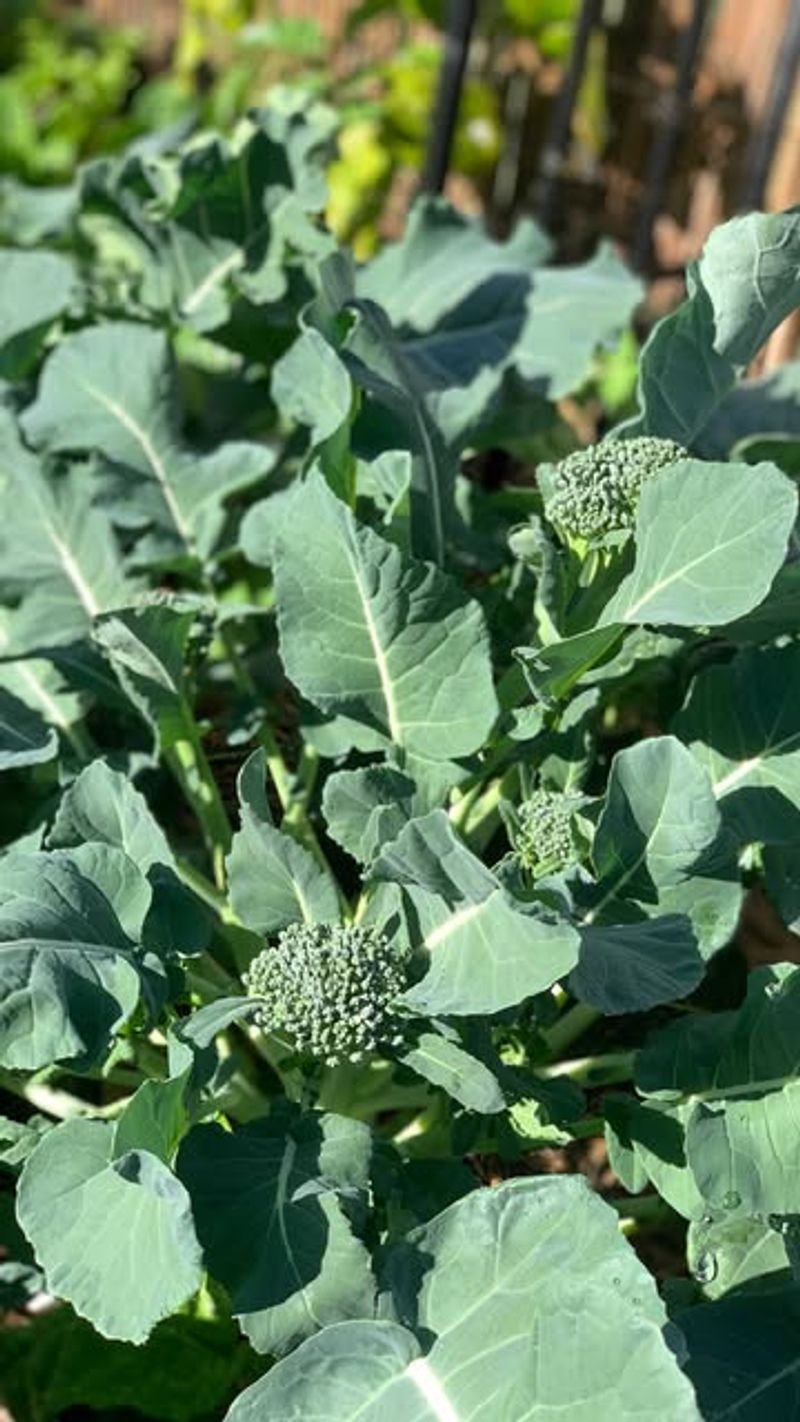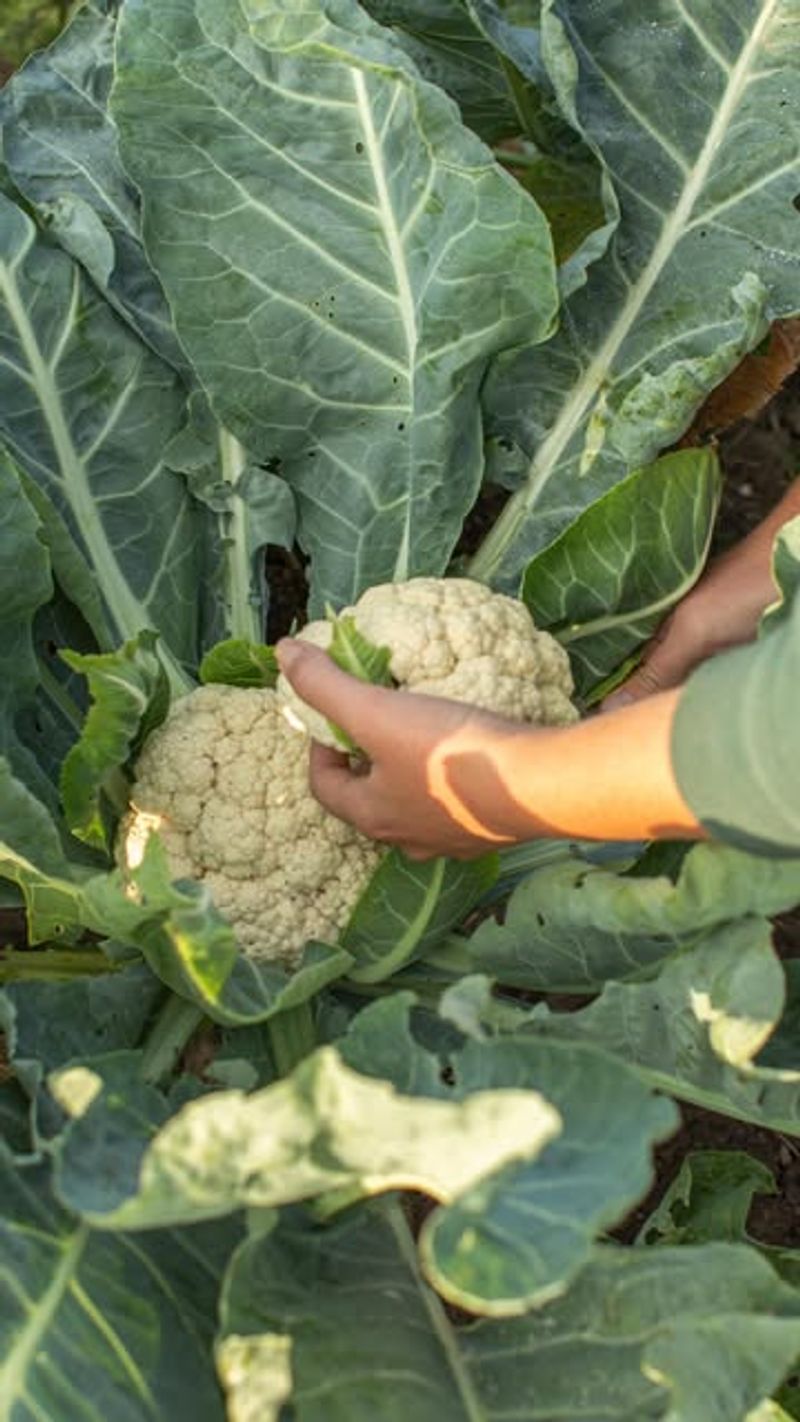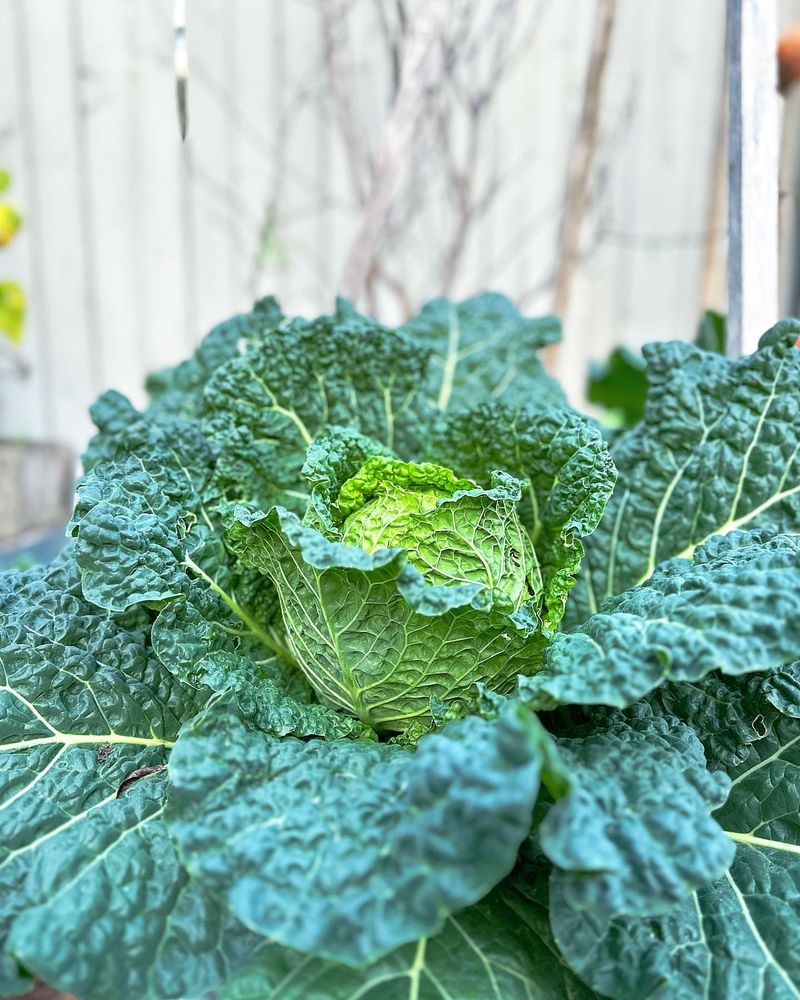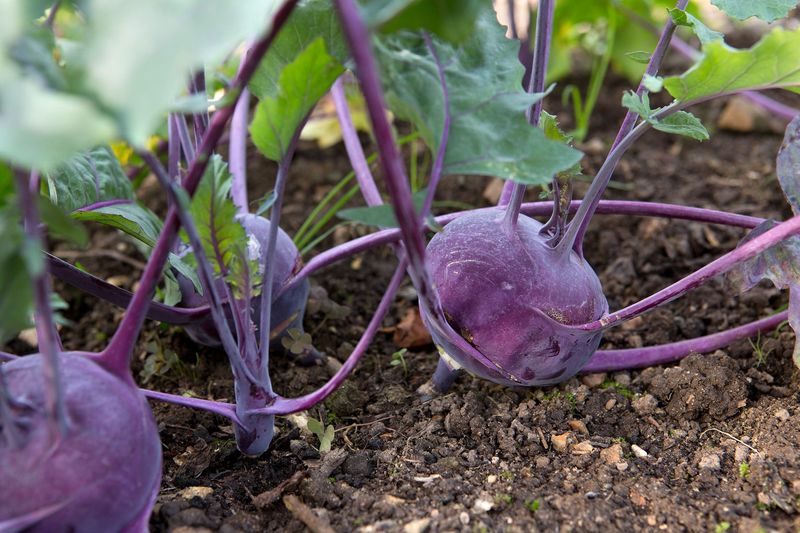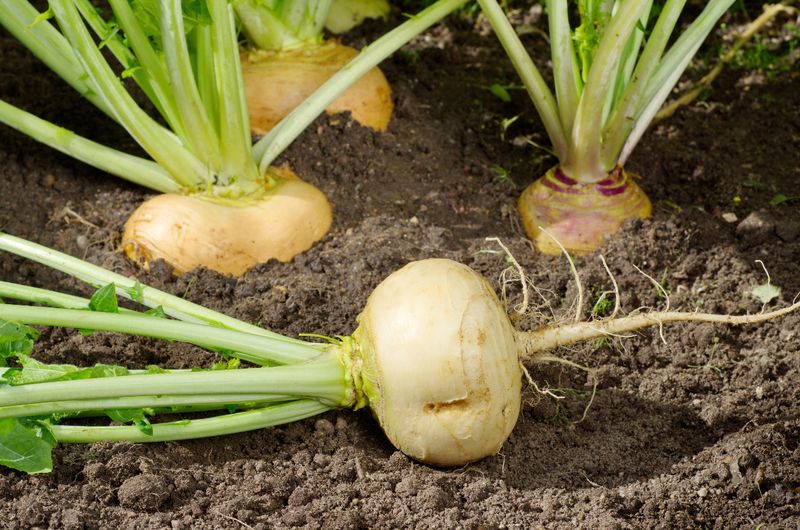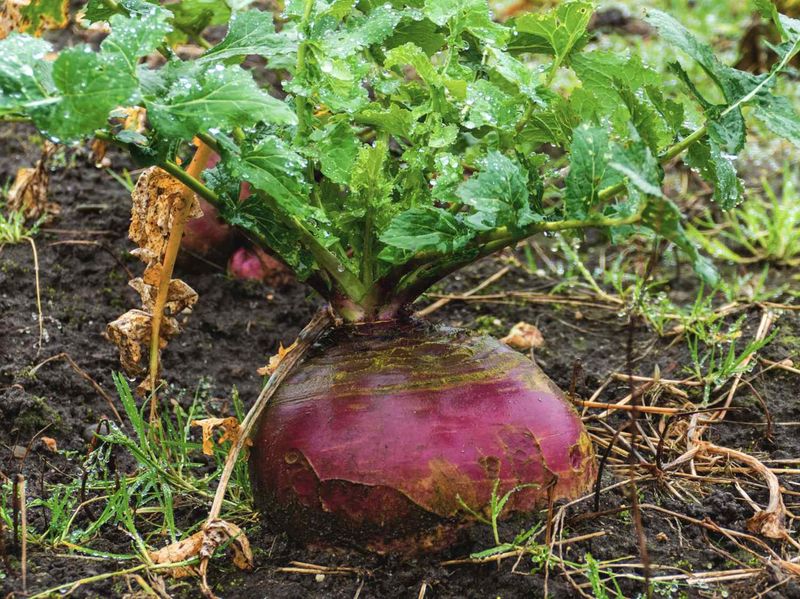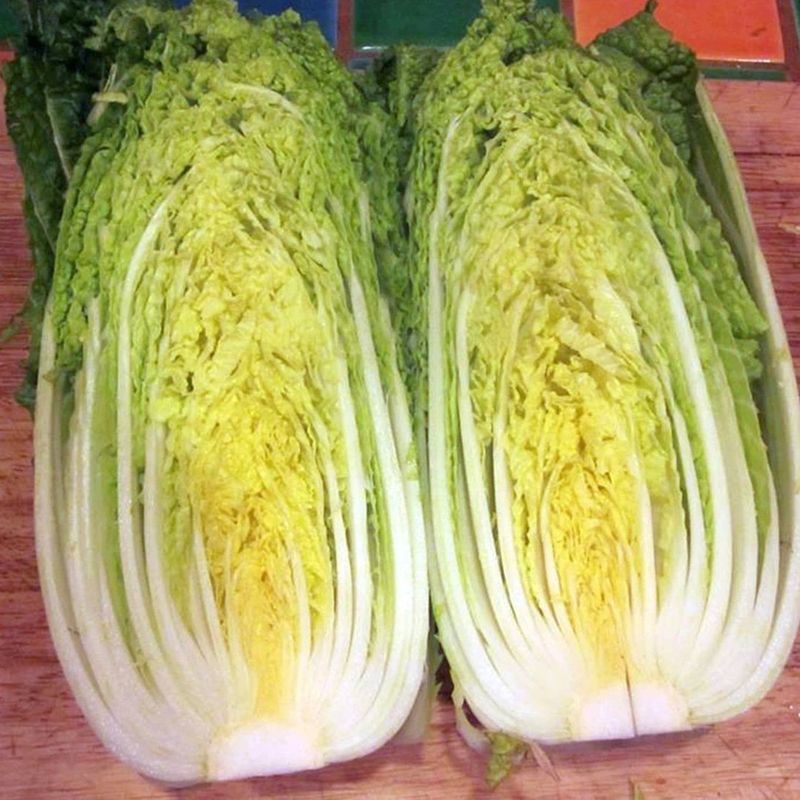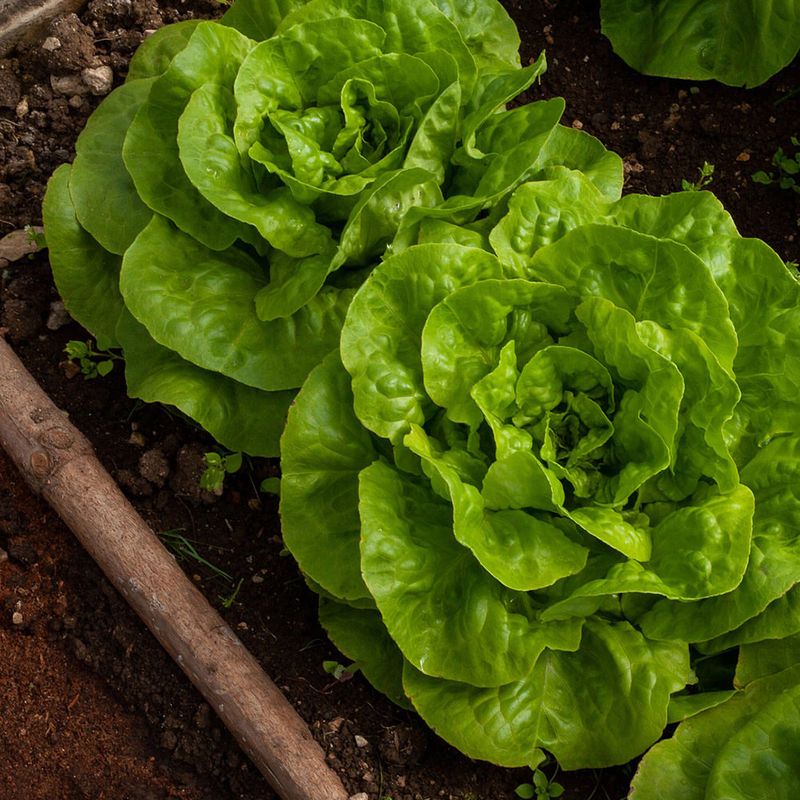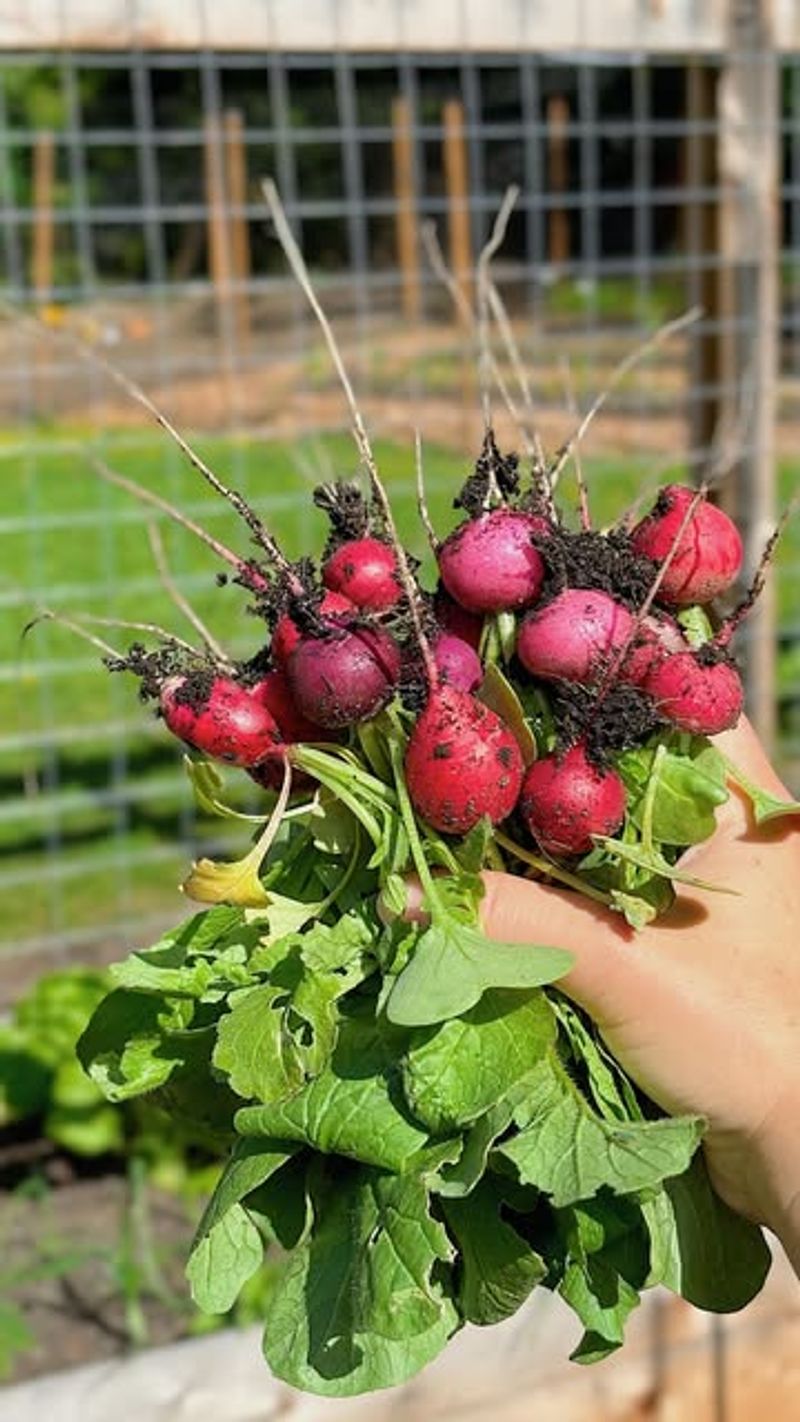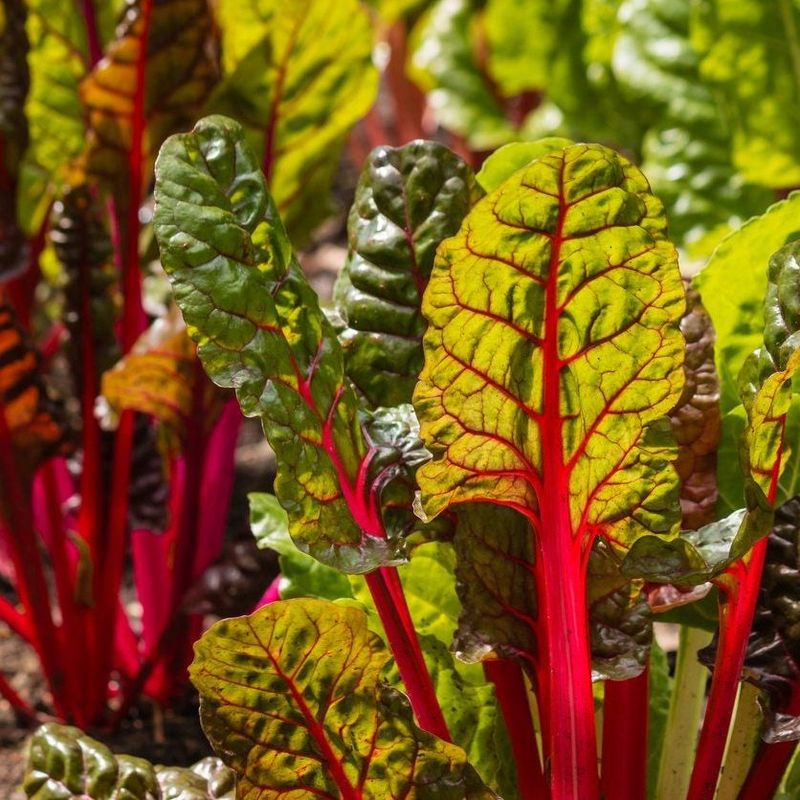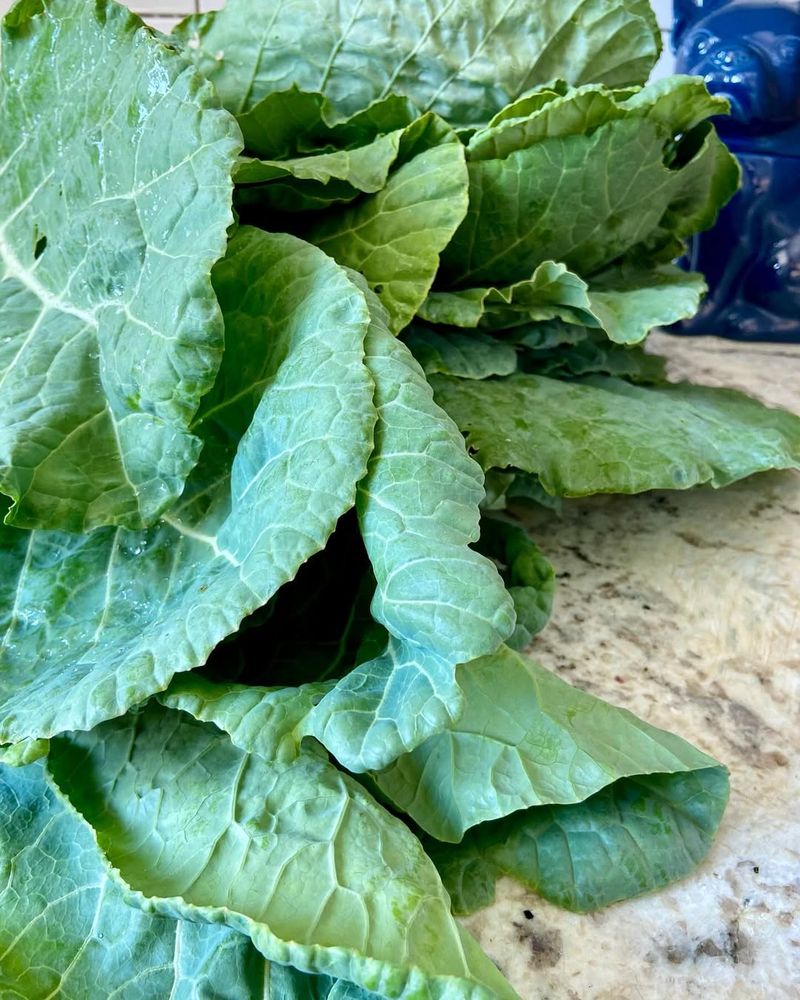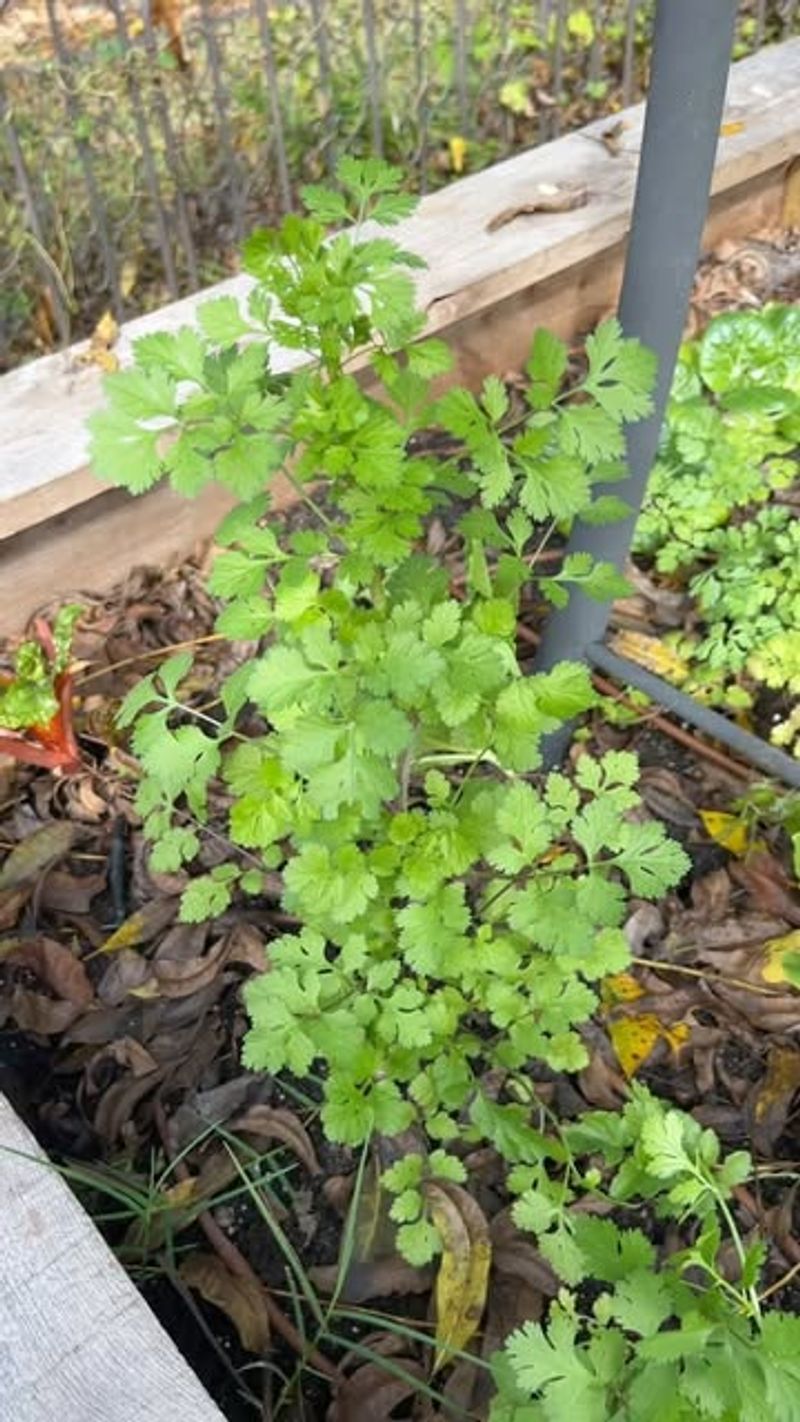July always sneaks up on me, and suddenly I realize—it’s already time to think about fall veggies. It feels early, but if I wait too long, the window for a proper autumn harvest closes fast.
I’ve learned that planting now means my crops actually have a fighting chance to mature before the first frost sneaks in. It’s a bit of a juggling act with the summer heat, but totally worth it.
With just a little prep in July, I get to enjoy fresh carrots, leafy greens, and other cool-season favorites long after summer flowers fade. It’s like giving your garden a second wind before winter rolls in.
1. Kale
Starting kale in July gives you plenty of time to enjoy multiple harvests before winter sets in. The cooler fall temperatures actually improve its flavor, making the leaves sweeter and less bitter than summer-grown kale. My garden wouldn’t be complete without a few rows of this nutritional powerhouse.
I’ve found that kale seedlings appreciate some afternoon shade during the hottest days of summer, so consider planting near taller crops for natural protection.
For continuous harvests, pick the outer leaves first and allow the center to keep producing. Frost-kissed kale is remarkably sweet – some gardeners in my community wait until after the first light frost to harvest for the best flavor profile.
2. Brussels Sprouts
July planting gives these slow-growing vegetables just enough time to develop their characteristic mini cabbage heads before frost. Many gardeners don’t realize Brussels sprouts actually benefit from light frost exposure, which converts starches to sugars and improves their flavor dramatically.
Give these plants plenty of space – they grow tall and need room to spread their leaves. Last season, my Brussels sprouts reached nearly four feet tall by November! Adding a layer of compost when planting provides the steady nutrition these heavy feeders require. Patience pays off with this crop.
The sprouts develop from the bottom of the stalk upward, so harvest accordingly when they reach about an inch in diameter. Removing lower leaves as the plant grows helps direct energy to sprout formation.
3. Carrots
Summer-sown carrots develop sweeter flavors as they mature in cooling fall temperatures. The trick with July planting is keeping the soil consistently moist until germination, which can take up to two weeks in summer heat.
Covering newly seeded rows with a board or burlap helps maintain moisture and prevents soil crusting. Once my seedlings emerge, I thin them ruthlessly – crowded carrots become stunted and twisted instead of developing those picture-perfect roots we all want.
Sandy soil produces the straightest roots, but most soil types work if you loosen the bed deeply before planting. For me, fall carrots always seem more flavorful than spring-planted ones – there’s something magical about how cool weather concentrates their natural sweetness.
4. Beets
Quick-maturing beets make perfect candidates for mid-summer sowing. Both the roots and tender greens are edible, essentially giving you two vegetables from one seed – a real garden efficiency I’ve come to appreciate over years of growing. Direct sowing works best since beets dislike transplanting.
Each “seed” is actually a fruit containing several seeds, so thinning becomes essential once seedlings reach about 2 inches tall. I save the thinnings for salads rather than discarding them – young beet greens add beautiful color and nutrition.
Consistent moisture produces the sweetest roots without woodiness. My garden journals show fall beets tend to have deeper color and better storage quality than spring-planted ones, making them ideal for canning and root cellar storage through winter.
5. Spinach
Few vegetables appreciate cool weather quite like spinach does. July plantings allow seeds to germinate in summer warmth but mature during autumn’s cooler days, avoiding the bitter bolting that plagues spring crops.
Creating a microclimate with partial shade helps summer-sown spinach thrive during the initial hot weeks. Providing afternoon protection from intense sun makes a remarkable difference in germination rates – I’ve had great success planting on the north side of taller summer crops like corn or tomatoes.
Successive plantings every two weeks from mid-July through August ensure continuous harvests well into fall. The sweetest, most tender leaves often come after light frosts have kissed the plants, concentrating natural sugars and creating an almost buttery texture that summer-grown spinach never achieves.
6. Broccoli
July-planted broccoli matures just as temperatures cool, resulting in tight, flavorful heads without the bitterness that heat can cause. Starting seeds indoors gives them protection during the most intense summer heat while still allowing plenty of time for transplanting into the garden.
Transplant when seedlings develop their first true leaves, usually 3-4 weeks after sowing. My fall broccoli plantings almost always outperform spring ones – fewer pest issues and slower bolting mean larger, more beautiful heads. Adding a balanced organic fertilizer at planting time supports strong development.
Don’t forget that broccoli isn’t just about the main head! After harvesting the central crown, side shoots will continue producing smaller florets for weeks. These secondary harvests often provide more total yield than the initial head, extending your fresh broccoli season well into late autumn.
7. Cauliflower
Timing cauliflower just right can be tricky, making July an ideal month to begin this somewhat finicky vegetable. Fall-maturing cauliflower typically develops cleaner, whiter heads than spring plantings because the cooling temperatures support proper development without heat stress.
Starting seeds indoors gives them a protective environment during July’s heat. Once established in the garden, consistent moisture prevents the stress that leads to “buttoning” – the premature formation of tiny, unusable heads. A steady feeding schedule also helps produce those picture-perfect white curds.
When heads begin forming, gently fold the outer leaves over the developing curd to protect it from sun exposure. This “blanching” technique keeps the head bright white instead of yellowing. Some newer varieties are self-blanching, which I’ve found incredibly convenient for busy harvest seasons.
8. Cabbage
Starting this in July allows heads to mature during cooler weather, resulting in sweeter flavor and better texture than summer-grown cabbage. The cooler temperatures of fall also mean fewer cabbage moths and other pests that can plague spring plantings.
I’ve found starting seeds indoors then transplanting when seedlings have 4-5 true leaves works beautifully. Space plants according to the variety – larger types need more room than compact varieties. Adding compost to planting holes gives seedlings the nutrients needed for strong initial growth.
Fall cabbage tends to store exceptionally well, making it perfect for sauerkraut and kimchi projects. Last year’s fall cabbage heads stayed fresh in my root cellar until February – much longer than my spring-planted ones ever lasted. The dense, sweet heads are worth the summer planning effort.
9. Kohlrabi
Often overlooked in gardens, kohlrabi deserves more attention for its unique flavor and exceptional cold tolerance. July-sown kohlrabi matures quickly, usually ready for harvest about 60 days after planting, making it perfect for fall gardens. Direct sowing works well, though I’ve had success with both methods.
The key is consistent moisture during germination and early growth. These alien-looking vegetables form their distinctive bulbs above ground, so there’s no need for deeply worked soil like root crops require. Harvest when the bulbs reach tennis ball size for the sweetest flavor and most tender texture.
Larger bulbs tend to become woody and less palatable. The leaves are also edible and can be used like kale or collards – essentially giving you two vegetables from one plant, which maximizes garden space efficiency.
10. Turnips
Fast-growing turnips make ideal candidates for July planting, often ready to harvest in just 45-60 days. Modern varieties offer much sweeter flavor profiles than the bitter turnips many remember from childhood – give them another chance if you’ve dismissed them previously.
Direct sowing works best, as turnips dislike root disturbance. I scatter seeds thinly in rows about 12 inches apart, then thin seedlings to 3-4 inches when they reach about 2 inches tall. The thinnings make excellent additions to summer salads with their mild, peppery flavor.
Fall-grown turnips develop exceptional sweetness as temperatures drop. For the most tender roots, provide consistent moisture to prevent woody texture. Harvest some roots while small for gourmet baby turnips, leaving others to grow larger for storage through winter months.
11. Rutabagas
July is perfect timing for rutabagas, which need about 90 days to reach maturity. Unlike their turnip cousins, rutabagas develop their best flavor after exposure to light frost, making them ideal fall crops with excellent storage potential. Direct sowing works well, planting seeds about half an inch deep.
The seedlings emerge quickly but grow somewhat slowly at first – don’t be discouraged by their initial pace. My garden journal notes show rutabagas often seem to accelerate growth in September as temperatures moderate. Consistent moisture prevents woody texture and splitting.
Mulching helps maintain soil moisture during late summer heat while suppressing weeds. Harvest after the first light frosts but before a hard freeze for the sweetest flavor – the transformation after frost is remarkable, turning them from good to exceptional.
12. Chinese Cabbage
This one matures perfectly during fall’s cooling temperatures, avoiding the bolting issues that plague spring plantings. Varieties like Napa and bok choy mature quickly, often ready within 45-60 days, making them excellent choices for succession planting throughout late summer.
Starting seeds indoors gives protection during intense summer heat. Transplant when seedlings have 3-4 true leaves, spacing according to variety – Napa types need more room than baby bok choy. Regular watering prevents stress that can trigger premature bolting.
Fall-grown Asian greens develop exceptional sweetness and crisp texture. I’ve found they’re less bothered by pests compared to spring plantings, reducing the need for row covers or other protections. Their cold tolerance means harvests can continue even after light frosts, extending the salad season well into autumn.
13. Lettuce
Summer-sown lettuce provides beautiful fall harvests when spring plantings have long since bolted. July starts allow seeds to germinate in warm soil but mature as temperatures cool, creating perfect conditions for sweet, crisp heads without bitterness. Creating a cooler microclimate helps during initial germination.
I’ve had great success starting seeds in partially shaded areas or using shade cloth until seedlings establish. Consistent moisture is crucial – lettuce seeds are small and need steady dampness to sprout successfully. Succession planting every two weeks ensures continuous harvests through fall.
Loose-leaf varieties mature faster than heading types, providing quicker returns. Cold frames or row covers extend the season even further, sometimes allowing fresh salads through December in my zone 6 garden – a real treat when most gardens have gone dormant.
14. Radishes
These make the perfect candidates for succession planting starting in July. Many varieties mature in just 21-30 days, providing near-instant garden gratification while waiting for slower crops to develop. Direct sowing works beautifully, as radishes dislike transplanting.
I scatter seeds thinly, then thin to about an inch apart once seedlings emerge. The soil should be loose and free of stones for straight, well-formed roots. Keeping the soil consistently moist prevents the pithiness and cracking that can affect spring crops.
Fall radishes typically develop milder, sweeter flavors than spring-grown ones, with less of the fiery heat that some find overwhelming. Try winter radish varieties like watermelon radish or black Spanish for something special – they grow larger, store longer, and offer unique colors and flavors for fall and winter meals.
15. Swiss Chard
July-planted Swiss chard provides beautiful harvests well into fall and often survives light frosts with protection. The vibrant stems in rainbow varieties add welcome color to autumn gardens when summer flowers have faded. Direct sowing works well, though seedlings need consistent moisture until established.
Unlike many greens, chard tolerates summer heat surprisingly well while still thriving in cooler fall conditions. Last year, my July-sown chard continued producing until December with minimal protection. Harvest using the “cut and come again” method, taking outer leaves while leaving the center to regenerate.
This approach provides months of continuous harvests from a single planting. The young leaves make excellent salad additions, while larger leaves can be cooked like spinach – essentially two vegetables in one, making chard a space-efficient garden choice.
16. Collard Greens
Extremely cold-hardy collards thrive when planted in July, producing nutritious greens well into winter in many climate zones. Their flavor actually improves after exposure to frost, which converts starches to sugars for a sweeter taste.
Starting seeds indoors then transplanting works well, giving seedlings protection during intense summer heat. Space plants generously – mature collards can spread two feet or more. Adding compost to planting holes provides steady nutrition for these heavy feeders.
Harvest the lower leaves first, allowing the plant to continue growing upward and producing new leaves at the center. With proper care, fall-planted collards often survive to spring in milder climates, providing an incredibly long harvest season.
17. Arugula
This one grows incredibly quickly, often ready for baby leaf harvests just 21 days after planting. July sowings allow you to avoid the bolting and bitterness that plague spring plantings during summer heat. Direct sowing works perfectly for this easy crop. I scatter seeds thinly in rows or blocks, barely covering them with soil.
Consistent moisture during germination leads to even stands of seedlings. The cooler temperatures of fall slow bolting significantly, extending the harvest window compared to spring plantings. For continuous harvests, sow small amounts every two weeks through September.
The nutty, peppery flavor intensifies slightly in cooler weather without becoming unpleasantly bitter. Combine young leaves with milder lettuces or use mature leaves in cooked dishes where their robust flavor adds character to otherwise simple meals.
18. Cilantro
Cilantro bolts quickly in summer heat, making July an excellent time to start planning for fall crops. Seeds sown now will mature during cooler autumn days, dramatically extending harvest time before flowering occurs. Direct sowing works best since cilantro dislikes root disturbance.
I plant seeds every few weeks for continuous harvests well into fall. The cooler temperatures not only slow bolting but also seem to intensify the distinctive flavor that makes this herb so beloved in many cuisines around the world. Allow some plants to flower and set seed (coriander) for a double harvest.
The flowers attract beneficial insects like tiny wasps that help control garden pests. Fall-grown cilantro often survives light frosts with minimal protection, providing fresh herbs long after tender summer varieties have succumbed to cold.

